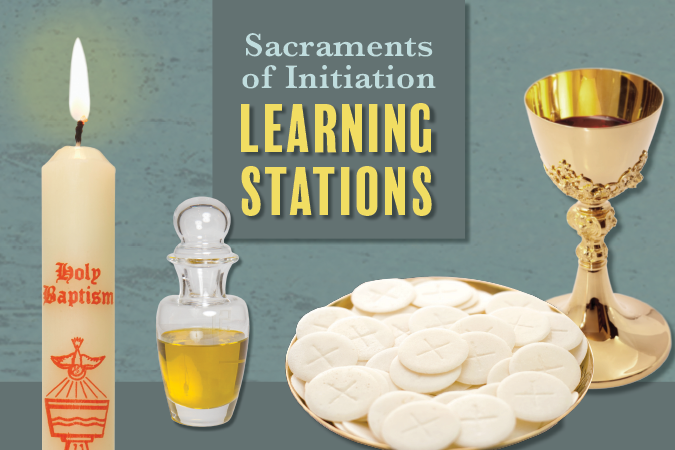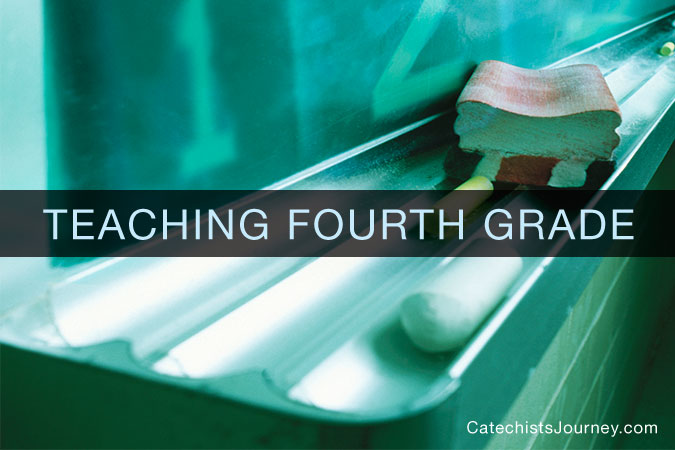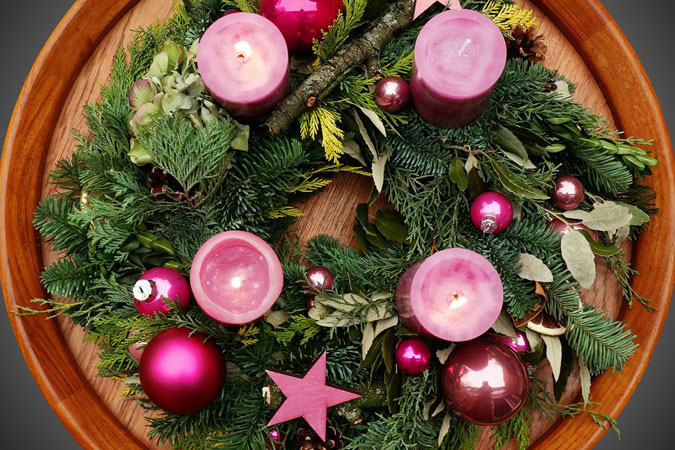In the next-to-last session for the year, I used the Sacraments of Initiation learning stations with my group of seventh graders. As the download page for the learning stations explains, the activity gets young people “out of their seats and moving around doing simple tasks to learn about the symbols and signs used in each Sacrament of Initiation.”
Overall it was a successful lesson. I was surprised by how quiet the young people were as they completed the tasks at each station—making crowns, blessing themselves with water, and so on, all while filling in worksheets to collect the information about the sacraments. Their quietness indicated they were focused on the work at hand, and several young people asked me relevant questions as they proceeded through the stations.
I adapted some of the 12 stations to the situation in our room. For instance, the wax seal activity wasn’t practical for a room without an aide to oversee the pouring of wax, so I eliminated that particular task, while keeping the poster information displayed. I didn’t have grapes available, so I gave the young people clip art of grapes to color as a substitute task. They seemed content with that. Of course, I was sure to ask if anyone had any allergies before proceeding with giving out the bread.
Before class, I copied the instructions for each station, modified the directions where needed for my adaptations, and printed them out in large print to display next to each poster. That way the young people could proceed at their own pace with a partner through the stations, not having to wait for my explanations at each. This spread out the young people throughout the room, which made for easier flow. When the faster workers finished, I invited them to sit and read from their Finding God books about the sacraments, which helped lead us into the discussion portion of the learning stations activity.
We concluded with a discussion of what the tasks the young people did had to do with each sacrament. Most of the symbols then made more sense for the kids, though they struggled with the “RSVP to MHR” abbreviation. Even when I reinforced that “MHR” stood for “Most Holy Redeemer,” a fact they had already read on the instruction sheet, it wasn’t meaningful to a group that had clearly not encountered this title for Jesus before. That aside, I reminded them that the point was to celebrate the Eucharist and respond to God’s invitation, something we had discussed in previous sessions.
The learning stations were a good change of pace from the usual way of proceeding in our sessions, with more time out of seats as the lesson progressed. They also made for a great transition lesson. Before I invited the young people to do the various activities, I reminded them that we were still celebrating the Easter season. I connected the celebration of the sacraments at the Easter Vigil to the fact that we would soon celebrate with the parish’s First Eucharist and Confirmation candidates as they received the sacraments. And after our faith formation year ends, the young people in my group will enter the Confirmation preparation class. Hopefully the Sacraments of Initiation learning stations will give the young people a good starting point for some of their discussions next year.
If you’ve used the Sacraments of Initiation learning stations, what was your class’s experience? How else have you taught young people about the Sacraments of Initiation?






Hey, Denise.
I would like to use this tool for my 7th grade. I downloaded the PDF with all the info except I don’t know how to get the posters. Do I need to buy them from y’all?
Thanks, Susie
Hi Susie,
The posters are available through the second link in the e-mail you would have received to get the overview and worksheets. They are free to you with this downloadable learning stations plan.
Let us know how it goes with your group!
Denise